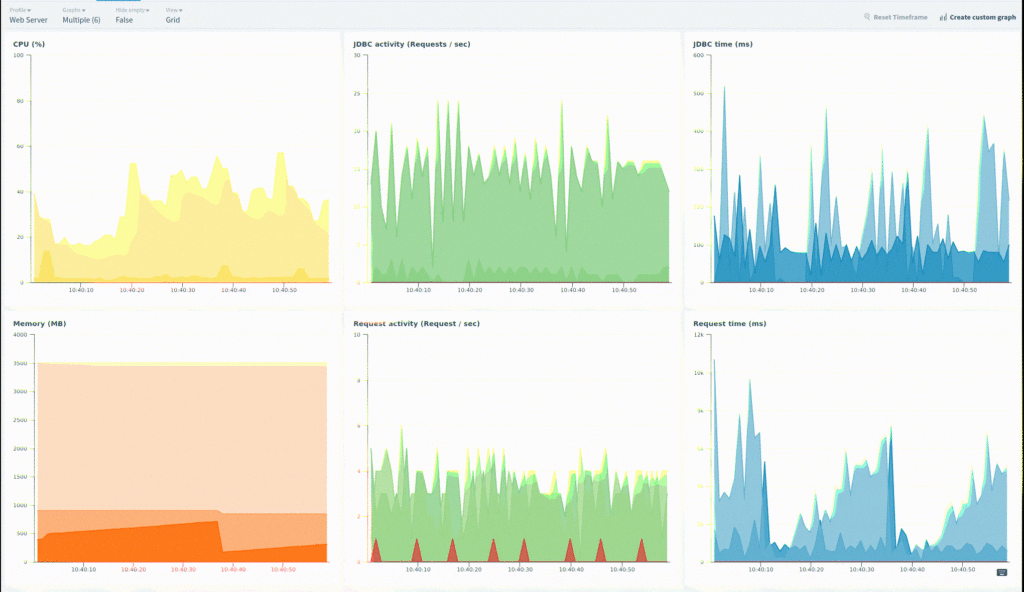Why Do I Need an Application Performance Monitor (APM) Tool?
Application Performance Monitoring (APM) is a technique that is a must-have for every serious-minded DevOps team. When it comes to employing the best practices for present-day software development, application Performance Monitoring procedures always top the list.
The sole purpose of monitoring an application’s performance on a routine basis is to portray visual imagery of the developed application or software’s internal operations while providing users with an excellent user experience.
Application Performance Monitoring (APM) tools are handy instruments that provide software administrators with the insight required to make a useful inference, figure out if the system works in semblance with the proposed blueprint, and implement fixes to issues that negatively impact the overall performance of the software.
Given the complexity of deploying software applications across multiple infrastructures (both cloud and on-premise), the DevOps team devised a means to keep track of their deployed apps’ operability. Taking into consideration the following reasons;
- To represent a concise image of the developed platform to all stakeholders.
- To state where there is an issue and what is needed to be adjusted.
Why is Application Performance Monitoring (APM) is Important to Organizations?
Application Performance Monitoring (APM) is an IT and software development best practice dedicated to ensuring application functions as expected. Application Performance management entails tracking the availability and performance of the various components of software applications such as a codebase, user experience, and other application dependencies.
For any business entity, the first step to ultimately wielding control over your applications’ performance is crucial to clearly understand what you would like to measure and how best to interpret it regarding your business model.
Every DevOps team in a well-structured organization must set up toolsets that allow them to measure performance metrics like each request and transaction in their codebase and the deployed app. Having such an observatory system permits organizations to baseline user experience and duly notify the DevOps team when the deployed software moves out of the project’s initial scope and the overall response time agreements.
With the help of super-efficient Application Performance Monitoring Platforms like FusionReactor, organizations can seamlessly monitor multiple applications on a grouping data concerning client CPU usage, constant network, data output, memory demands, and overall bandwidth.
Why is an APM a No Brainer For Organisations

Following the above definitions, using an APM can be a walk in the park if well implemented. This section is slated for developers, and DevOps teams keen on transcending their organizational needs to the next level. In this guide, I would be highlighting the key factors that would aid any organization in transforming their overall business model with the help of a well-suited Application Performance Monitoring tool.
Insight in your Environment
Learning the application workflow and entire development environment is the very first advantage that an APM provisions an organization. As the starting point for any APM implementation, APM provides visual imagery of how the application runs and who is using it. On the other hand, the DevOps team – and the administrative arm of an organization – has become accustomed to tracking different usage volumes from various timeframes (e.g., from 12:00 pm to 12:00 am). Using an APM helps in the scheduling of resource-intensive jobs and capacity planning.
Customer Satisfaction
Every business unit’s goal is to gain 100% customer satisfaction – and this is why performance monitoring becomes even more necessary long after the application has been deployed. Once a clear understanding of how the environment operates is established, you and your organization are a step closer to increasing user satisfaction.
Given users’ interactions are the crucial components of any system, as you increase your customer’s efficiency, you boost overall customer satisfaction and subsequent retention.
Reduces Firefighting
A useful APM tool routinely locates application performance bottlenecks on the fly. With this information at hand, project managers do not necessarily need to assemble all the application teams to address an issue. All that is required to be done is to have only the required personnel to troubleshoot and fix that issue—allowing the other half of the workforce to focus and take additional responsibilities.
Builds Credibility
Building customer credibility is a prerequisite for every business model. Developing healthy customer credibility for your brand takes time to develop yet can be lost in an instance. Management thrives on proactivity. As businesses get better at being proactive and communicating problems to their customers, they tend to build more customer confidence in the brand. Ultimately eliminating any negative perceptions of the business organization and the barrier of competition with similar service providers
Issue Isolation
Once complete proactivity and a proper monitoring and alert system are set in place, there would be no more need to have multiple staff monitor and validate the entire application. Although you would still need to maintain a handful of staff to respond to alerts, the amount of staff needed would be the barest minimum. This allows administrative-level employees to focus more on project work, leaving daily tracking and monitoring to the junior team.
So Why Do I Need an Application Performance Monitoring (APM) Tool?
In conclusion, it is pertinent for every organization to establish a well-implemented APM solution as it aids DevOps teams (and the organizations at large) resolve issues and bottlenecks at a brisk pace and reduces the organization’s Mean Time To Resolution (MTTR). By a wide margin, this impacts the overall business bottom line to a reduced state.
An organization that studies its application’s development and deployment environment can seamlessly harness useful insights while monitoring resource-intensive projects. Besides providing structural planning for project execution, a good Java APM bolsters customers’ satisfaction and initiates more users’ engagement. Your organization does not need to employ an in-house Q.A. team – given most of the processes involved in quality control and analysis are automated and handled on the go. Corporations can now focus more energy on what matters. Organizations can now say goodbye to the unnecessary hassle involved in maintaining and an extensive software analysis team. In the long run, cutting down extra expenses required to maintain these staff – and increasing the overall Return On Investment (R.O.I) through this and more user interaction.
Start your free FusionRector APM trial












